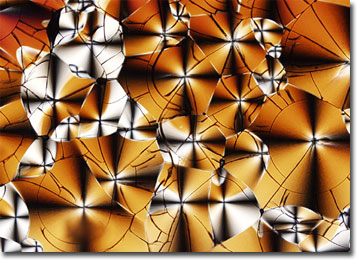Polarized Light Microscopy Digital Image Gallery
Biotin
Sometimes referred to as vitamin H, biotin is a water-soluble, nitrogen-containing acid, which is a constituent of the B-complex family of vitamins. The relatively stable substance can be found in a wide variety of foods, such as liver, egg yolks, wheat bran, raspberries, tomatoes, cauliflower, chicken, and pork, though often only in small quantities.

Biotin serves an array of functions in the human body, but is particularly important for metabolism of fats, carbohydrates, and amino acids. However, the necessary daily intake of the vitamin, which is typically believed to be 100 to 200 micrograms for adults, is quite low. Thus, naturally occurring biotin deficiencies are extremely rare. When deficiencies of the vitamin do occur it is usually due to one of two different genetic enzyme disorders that effectively result in an increase of the bodily requisite for biotin. Eating an excessive amount of raw egg whites, which contain the biotin antagonist avidin, can also induce the condition. Visible indicators of biotin deficiency include hair loss and a scaly red facial rash, while neurological symptoms include fatigue, depression, numbness or tingling sensations in the limbs, and hallucinations.
